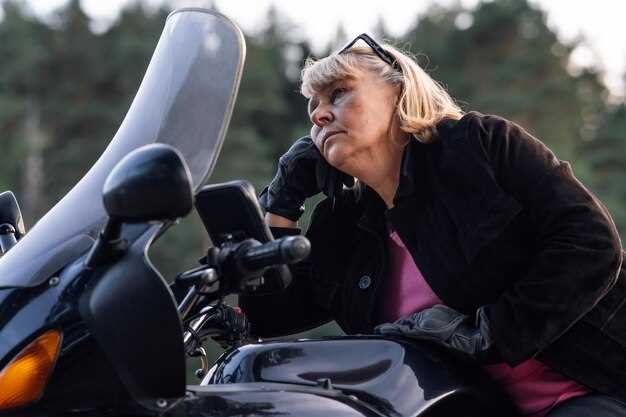

Touring motorcycles are designed for long-distance travel, combining comfort, performance, and practicality. Unlike standard motorcycles, these machines come equipped with features that cater to the unique needs of long-distance riders. When considering a touring motorcycle, it is essential to understand the key aspects that differentiate them from other styles of motorcycles.
One of the primary characteristics of a touring motorcycle is its ergonomics. These bikes typically provide a more relaxed riding position, designed to minimize fatigue during long rides. Features such as adjustable seats, lower footpegs, and higher handlebars enhance rider comfort, making it possible to cover vast distances without discomfort.
Another critical feature of touring motorcycles is their storage capacity. Many touring models include integrated saddlebags, top cases, and other storage solutions, allowing riders to carry their gear with ease. This added space is crucial for extended trips, where packing for various weather conditions and necessities is a priority.
Moreover, touring motorcycles often come equipped with advanced technology features, such as navigation systems, Bluetooth connectivity, and heated grips. These elements not only enhance the riding experience but also ensure safety and convenience during long journeys.
Understanding these key features will help riders choose the right touring motorcycle that suits their needs and enhances their traveling experience on the open road.
Comfort and Ergonomics for Long Rides
When it comes to touring motorcycles, comfort and ergonomics play a crucial role in enhancing the overall travel experience. Long rides can be demanding, and the design of the bike significantly affects rider fatigue and enjoyment.
A key aspect of touring motorcycles is their seating position. A relaxed, upright posture minimizes strain on the back and arms, allowing riders to maintain comfort over long distances. Many touring models feature wide, plush seats that provide ample support for extended journeys. Such seats are often adjustable and may include heating options, which can be a great advantage in varying climates.
Another important feature is the bike’s handlebar height and footpeg placement. These elements should align with the rider’s body dimensions to ensure a natural reach, reducing wrist and leg discomfort. Some touring motorcycles offer adjustable components that can be tailored to fit different rider preferences, enhancing overall ergonomics.
Suspension systems on touring motorcycles are designed to absorb bumps and uneven road surfaces effectively. High-quality shock absorbers and a well-tuned suspension provide a smooth ride, which is essential during long trips. Furthermore, many touring bikes come equipped with advanced features such as cruise control and windshields, which reduce wind fatigue and allow the rider to maintain a steady speed with minimal effort.
Storage options are also vital for comfort during long travel. Integrated saddlebags and top cases enable riders to carry necessary gear without compromising comfort or aerodynamics. Easy access to personal items helps reduce the frequency of stops, keeping the ride enjoyable and uninterrupted.
In summary, selecting a touring motorcycle that prioritizes comfort and ergonomics can make all the difference in the quality of long rides. By focusing on seating, positioning, suspension, and storage solutions, riders can significantly enhance their travel experience.
Storage Options: Essential Features for Travel

When it comes to touring motorcycles, effective storage options play a crucial role in ensuring a comfortable and organized journey. A well-designed storage system enhances the overall touring experience by allowing riders to carry essential gear, clothing, and personal items conveniently.
One of the most important features in touring motorcycles is the presence of hard or soft saddlebags. Hard saddlebags offer secure and weather-resistant protection for your belongings, while soft saddlebags provide flexibility and lighter weight. Many motorcycles come equipped with a mounting system that allows for easy attachment and removal of these bags, catering to various travel needs.
In addition to saddlebags, many touring motorcycles feature a top case, which provides extra storage space for bulkier items. These cases typically come with locks to protect valuables and can often accommodate a full-face helmet. A spacious top case can be invaluable when planning extended trips, allowing riders to pack more efficiently.
Another essential feature is the inclusion of an integrated cargo rack, which offers additional storage solutions. This allows for securing items such as sleeping bags, tents, or even additional luggage. The versatility of a cargo rack enhances the motorcycle’s capacity without sacrificing aesthetic appeal.
Moreover, some touring motorcycles are equipped with built-in storage compartments, such as glove boxes or under-seat storage. These compartments are perfect for keeping smaller items, like documents, tools, or electronic devices, easily accessible during long rides.
Lastly, riders should consider the weight distribution when packing their motorcycle. Balanced storage not only improves handling but also ensures that the motorcycle remains stable on various road conditions. Choosing the right storage options can make a significant difference in the comfort, convenience, and safety of any touring adventure.
Technology and Safety Features in Modern Touring Bikes

Modern touring motorcycles are equipped with advanced technology and safety features that enhance the overall travel experience. One of the key aspects is the inclusion of electronic braking systems, which provide superior stopping power and stability. Features like Anti-lock Braking Systems (ABS) ensure that the wheels do not lock up during sudden stops, allowing for better control on various road conditions.
Adaptive cruise control is another significant advancement found in many contemporary touring bikes. This technology allows riders to maintain a steady speed while automatically adjusting to the traffic around them, reducing fatigue on long journeys. Additionally, these motorcycles often come with traction control systems that monitor wheel slip and adjust throttle input accordingly, enhancing stability during acceleration.
Navigation systems integrated into the onboard display provide riders with real-time directions and route planning, making travels more efficient and enjoyable. Bluetooth connectivity enables seamless communication with smartphones, allowing for music streaming, calls, and navigation prompts without distraction.
Furthermore, modern touring bikes pay significant attention to rider comfort and safety with features like heated grips and seats, adjustable windshields, and ergonomic seating positions. These components are designed not only to make long-distance travel more comfortable but also to reduce fatigue and increase safety on extended rides.
Lastly, many touring motorcycles now come with comprehensive lighting systems, including adaptive headlights that adjust their intensity and direction based on lean angle and steering input, ensuring maximum visibility during night rides. These innovative technologies collectively contribute to a safer, more enjoyable travel experience for motorcyclists worldwide.
